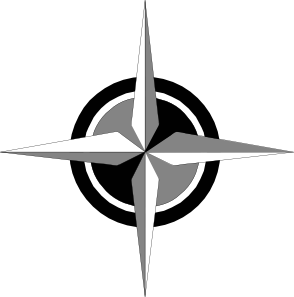Communication
If you can't communicate with your team, you have no control over events. You have no way to get them together, or keep a team member from doing something stupid.
The communication rule is simple. The captain at any time has to be able to demonstrate that he can get a response to two signals:
"Where are you"
"Come to me"
The responder then has two signals he can choose from:
"Here I am"
"I'm coming"
Using voice this is fairly easy. Just shout.
Voice doesn't carry well, and if you are doing a lot of shouting, your voice gets sore.
A whistle code works better.
Here's one code:
| Where are you? | Two long blasts. | "M" |
| Here I am. | One short blast. | "E" |
| Come to me | Long short long short | "C" |
| I'm coming | two short blasts | "I" |
Longs should be two seconds. Shorts 1/2 to 2/3 of a second.
All of the above are letters in Morse code.
You can set up your own code. Keep it simple at first. You may want to add signals for "Stop where you are" "Move to a place of good visibility" "Go to the rendezvous" But use just the simple code above for a while first.
Avoid using three same length blasts. It can confuse people into thinking you are in distress.
Remember that you are using a 'public channel' Everyone within a hundred meters hears you. If you have a team of 6 guys, and you give out "Where are you?" you are going to get 5 responses. If they overlap, you may be uncertain if they are all there.
One team solved this by giving each guy a number as in a 'count off' Their response to any signal was the same: Their number of shorts. They knew they had to do in order too.
So the captain would blow two longs, a pause, one short.
The navigator would blow two shorts.
Mike would blow 3 shorts.
John would blow 4 shorts.
Another team had an iron clad rule that buddies NEVER got out of sight of each other, and only one pair of the buddy would answer signals with a whistle.
A third team happened to have 4 diffent whistles. They had different sounds so the captain could tell them apart by the sound.
Training exercise:
You need two trainers for this. Put one in each meadow.
Give each team 15 minutes to settle on a code. It will help if they write it down. Verify that everyone has a whistle.
Now give a few minutes instruction on basic searches. They are going to use a sweep search -- spread out, with each person just out of sight of the person next to them. Each team member needs to keep his eyes and ears open to where his other team members are. Spacing is hard. Too close, and you see less country. Too far, and you miss things, or worse, you lose track of each other.
For this exercise you need two meadows or fields that are separated by 1/4 to 1/2 a kilometer of woods. The strip needs to be wide enough that the teams can be a hundred meters apart. The exercise is to go from one meadow to the other in line abrest, 25 meters or so apart. Ahead of time, put about 10 controls per team in the strip. If this is not part of a permanent training facility, you can use index cards stapled to trees.
If you don't have a pair of fields like this, tell them to go in for 5 minutes turn around, and come back.
On the first pass, their object is to come out on the other side more or less together. And at the point where they think they are in the middle of the strip, the captain blows "where are you" and his team responds.
On the second pass tell them that there are X controls in this strip.
They have to find controls, but they have to be organized about it.
They have to go back and forth across the strip, but they have to check in with the trainer in each meadow. The trainer marks them on the evenness and simultaneousness of their emergence.
Or tell them that they have an unknown period of time to search for controls. Periodically the trainer will blow the horn of his car. Teams have 3 minutes after horn blow to appear at the edge of the meadow together as a group.
There will be 4 sessions, ranging in time from 5 minutes to 20 minutes.
run two sessions. Gather them together. Discuss the problems they are having. Talk about how to deal with them. Give them two more sessions.
